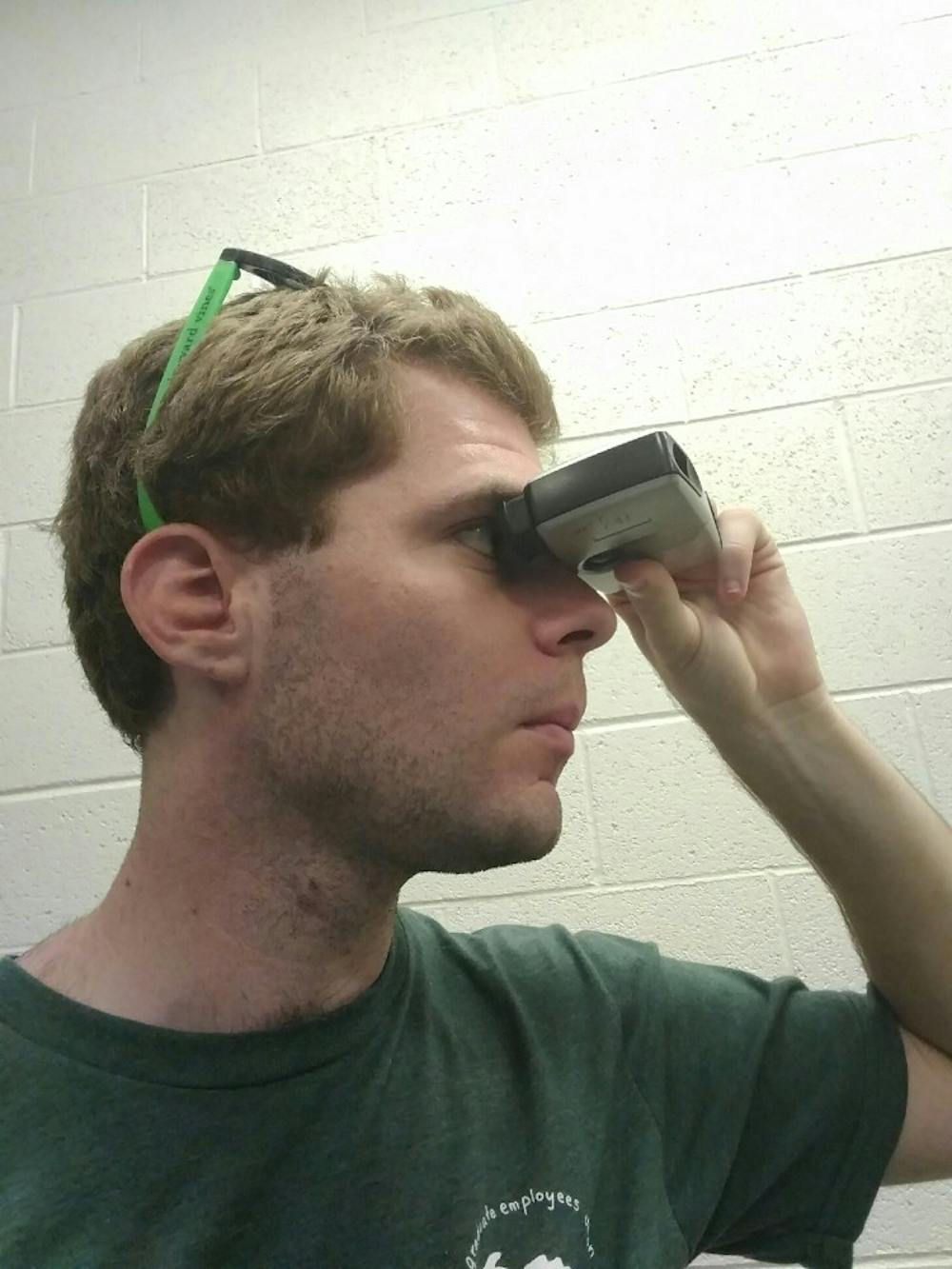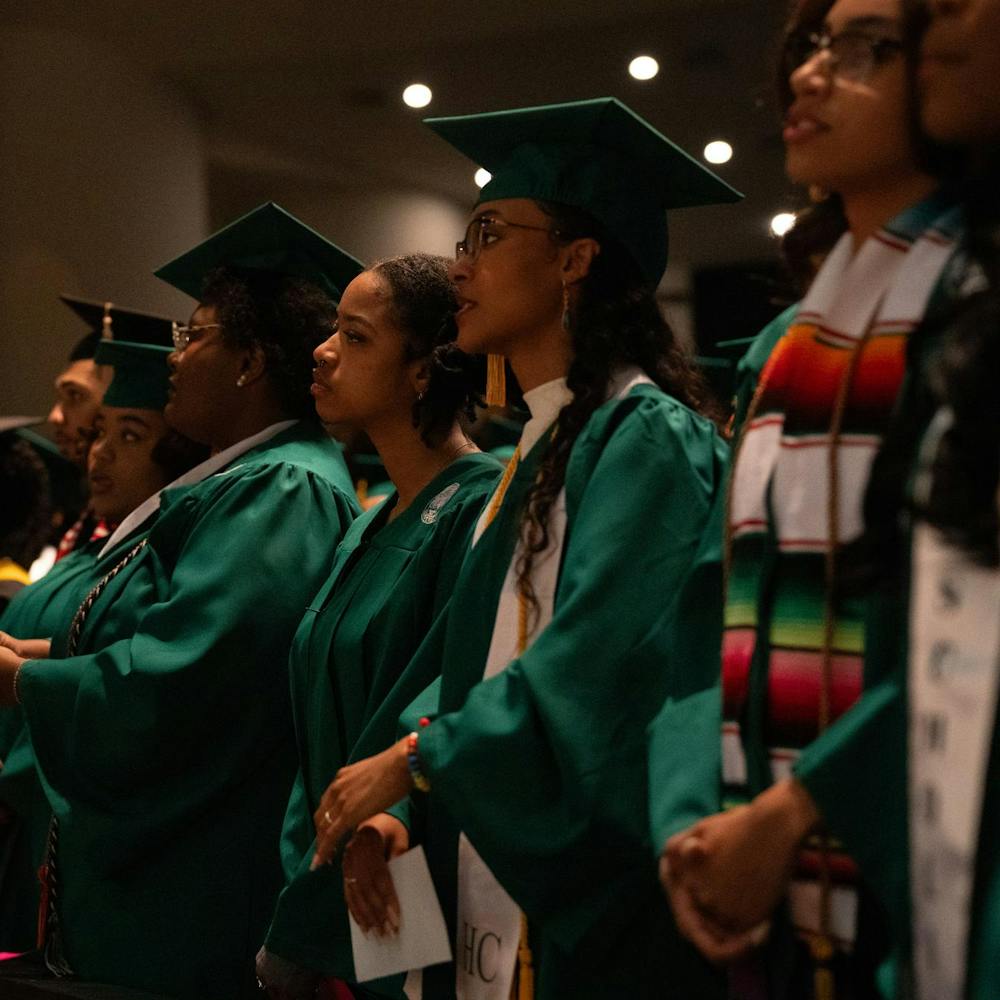Vivid flashing lights and the cast of light through a prism are taken for granted each day. However, for doctoral student Henry Busby, those colors might as well be the dark side of the moon.
Visually impaired because of a disease called achromatopsia, Busby’s field of vision is subdued more than the average person.
There are several visual impairment diseases like achromatopsia. In Busby’s case, his disease doesn’t take away his full sight.
There are also two subsets of achromatopsia — rod monochromatism and blue cone monochromatism, according to Achromatopsia.info.
“The experimental differences between the two is that people with rod monochromatism do see in all black and white,” Busby said.
Busby has blue cone monochromatism, which allows him to see some color. However, blue cone monochromatism can make it difficult to discriminate colors from each other, according to the Blue Cone Monochromacy Families Foundation.
“People with the rod monochromatism completely lack any cone cells in their retina,” Busby said. “I have some, just not very many.”
Rod and blue cone monochromatism is passed down from generation to generation. Blue cone monochromatism affects one in 100,000 males, according to BCM Families Foundation.
“In order for someone to get rod monochromatism, they have to receive the defective gene from both parents. I would think, that would make it rarer, but for whatever reason it’s more common,” Busby said. “People like me with blue cone monochromatism, it’s X-linked recessive, meaning they get it through our mothers only.”
According to the MSU Resource Center for Persons with Disabilities website, there are several accommodations that can be requested such as housing accommodations, alternative testing and transportation.
Although Busby — who’s pursuing a doctorate degree in history after earning his bachelor’s degree at the University of Memphis and master’s at the University of Wyoming — has never thought of using all of these resources.
“History courses aren’t really challenging visually,” Busby said. “There’s a lot of reading, but my solution to that ... I just hold something (really) close.”
Busby also uses a pair of binoculars that help cater to his classroom needs, like seeing the board in the front of the class.
Moving around campus first provided a challenge to Busby. He struggled using the Capital Area Transportation Authority, or CATA, bus service.
“The only difficulty I’ve ever experienced there was, due to my color blindness, in the daytime I usually can’t read the numbers so I just have to guess,” Busby said. “I have gotten on the wrong one sometimes, but at night it’s much easier since the light is lower.”
There was a point in time when Busby could get behind the wheel. However, the issues surrounding his disease limited that chance.
“They ran a series of tests on me. They said you didn’t pass one of the them but come back in a few weeks and run it again,” Busby said. “I said if I didn’t pass it today, I’m not going to pass it three weeks from now.”
A teaching assistant as well, Busby said he has issues connecting names and faces.
Busby said there was one semester at University of Wyoming when one of his classrooms was particularly difficult to teach in.
“Something about the dispersal of light in the classroom I was in it was just so difficult,” he said. “There were some students who came to me at the end of the term (that said) ‘We always raised our hands’ and I told them, ‘Why didn’t you tell me?'"







